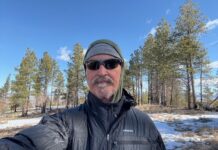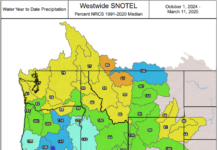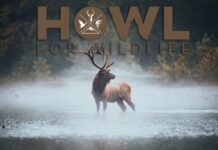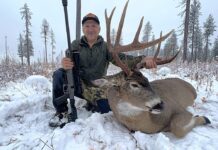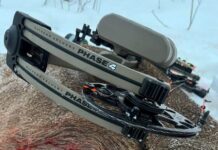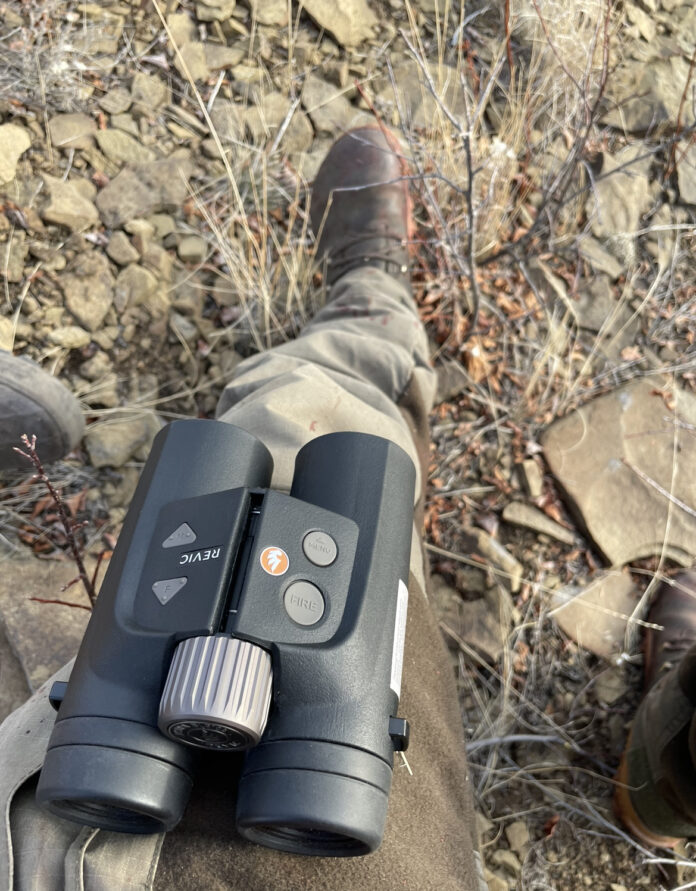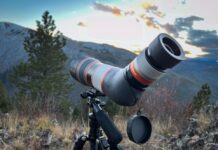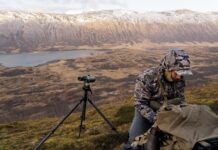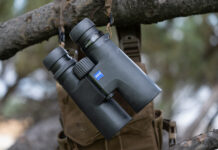In January of 2023, I used a pair of the prototype Revic BLR10b RF Binos for a few weeks of hunts. This included an elk hunt with seven elk taken between 350 yards and 647 yards in temperatures between low teens and 45°.
These prototypes exhibited by far the best and most consistent ranging of any commercial unit that I, or anyone I was with, have seen. They ranged faster and farther than Vortex Fury 5000 AB’s and way beyond Swarovski EL Range TA and Leica Geovid Pro could. Consistent and on-demand, ranging beyond 2,700 yards on dirt, grass, trees, and rocks. Individual elk were ranged on-demand past a mile in all weather conditions. Beyond that, the return speed for ballistic data for the shot was extremely quick— sub 1 second.
Revic BLR10b
This review will not be a specification review or article—those can be read on the manufacturer’s website. Instead, it is an overview of the evaluation in use while shooting and hunting in the mountains of the West in all weather conditions.

Ranging
Both the prototype and production versions have the fastest and best RF (consistent and longest) performance of any commercial unit that I am currently aware of. On demand and expected, deer range to between 2,300 and 2700 yards on small trees, rocks, and grass; individual deer range is limited to the steadiness of the user and platform—900 to 1,200y is the average.

Side by side with Vortex Fury 5000, Swarovski El range TA, Leica Geovid Pro and R, Zeiss RF, and Sig 10k – the BLR10b’s are in a separate class of ranging altogether, with only the Vortex Fury 5000 and Sig 10k being close.
In short, there has not been a single time in the field when I or someone I was with wanted a range to shoot and did not immediately get that range.
Data
Revic uses its own ballistic solver in its products. You must use a phone app to build the data and then Bluetooth to the binos—there is no option for bino-only profile building. The app and linking the device are easy to use and quick.
Their solver’s output is almost always the same, or at most within .1 mil, or .25 moa of multiple other known solvers—AB, Shooter, JBM, etc.
The data output/display is extremely quick—as fast as your eye can read the range and shift up and right in the FOV; there is no delay in the solution or waiting for it.
There are multiple ranging modes and two different wind modes, and data will display in Mil, MOA, or “shoot to” modes. The latter is unique in that it takes your rifle’s data at baseline conditions and then adjusts the range given based on current ambient conditions to give an adjusted range that you dial to on a BDC turret.
Personally, the only negative about the data portion is that it is a requirement to use the phone with an app. Having a way to input a rifle profile in the field would be useful in an emergency if the phone battery dies, or gets lost. Even a very simplified way would work. Having said that, it is not a scenario that has come up in 18 months of heavy use.
Optical Quality
Compared side by side with (generally multiple) Vortex Fury 5000, Sig 10K, Swaro El Range TA’s, Leica Geovid Pro and R, and Zeiss RF, the BLR10b optically are good.
Resolution is good, clarity and brightness are good, edge-to-edge clarity is good, and FOV is good. There is nothing to complain about in functional terms.
Multiple people using them back-to-back usually rated them in order from worst to best as Sig 10K, Vortex Fury, Revics, then some differing placements between Geovid R and Pro, Zeiss, and Swaro.
There is a noticeable jump in “glass” from the Sig to Vortex Fury due to the blue/green tint in the Sigs; then again from Fury to Revics due to way less or no tint in the Revic and the softer image of the Vortex; then a bump from Revics to the others in resolution, color fidelity, and image “pop”.
In short, the BLR10b’s are clearly better than “good enough” and are into the “quite good” or “solid” territory. They are notably better than the Sig or Vortex for glassing and, in practical use, are not different than even the top RF binoculars. (Interestingly, in use, the Geovid R’s were preferred by multiple people over the Geovid Pro’s, Swaro El range, and Zeiss RF, side by side)
All weather performance
From -26F to over 100F, the binos have functioned flawlessly with no detectable loss in performance. Cold soaking (the RF reaching full ambient very low temps) and reduced performance or outright failure to range have not been an issue at all. The binos have been left outside or in the vehicle 100% since day one, down to -26F, and they have worked the first time, every time.
Of note is that the first battery lasted nearly a year in those conditions, and ranging on average 4-5 days a week.

At some point all lasers fail to be able to get through fog, blowing snow, rain, or sand/dust, however the BLR10b’s have been by far the most consistent and capable of any commercial RF when used side by side. Of all the commercial Bino LRF’s currently on the market, the Revics have been the clear best in all weather and condition performance.
Field use
Total use as of May 2024 is nearly 18 months – a bit over 1 month on the prototype and 17 months on the production pair. If my math and memory are correct, they have been used to range and give the solution to 14 game animals in multiple states ranging from blowing sand and dust in 90F temps, to 3 feet of snow and fog at -12F. 10,000 plus rounds have been fired using them for ranging in the mountains; they have crossed the continent four times both driving and flying, and have spent their entire life in a bino harness in the back of a truck getting gear, rifles, and ammo piled on and smashed into them, and have given consistent and on-demand correct function with every button push.

Conclusion
The Revic BLR10b in field use hunting and shooting have proven over nearly a year and half to be the overall best preforming RF binoculars I have used to date. Other than for direct comparison, I have not chosen to use either of the two “alpha” RF binos that I have over the Revics. Their optical quality is good to quite good, and their performance in ranging, data solutions, and all weather and condition performance is currently unmatched.
Comment or ask Form questions here.
Continue reading our optics reviews.



